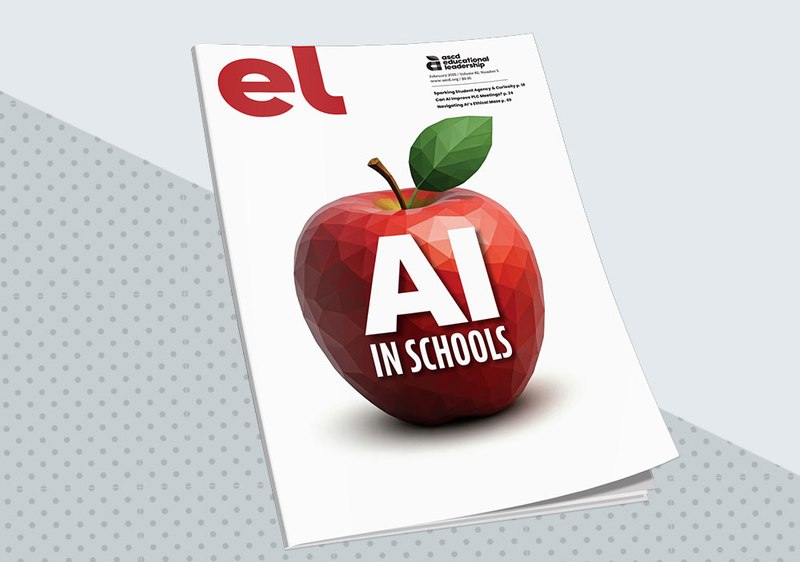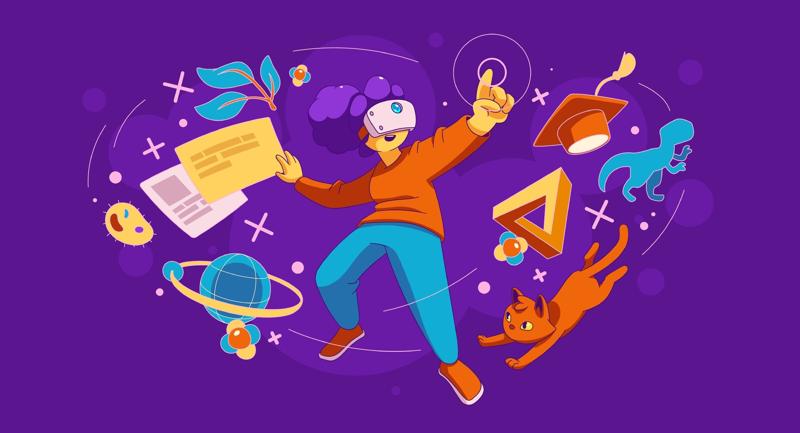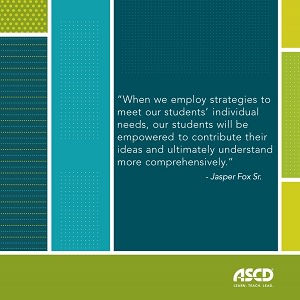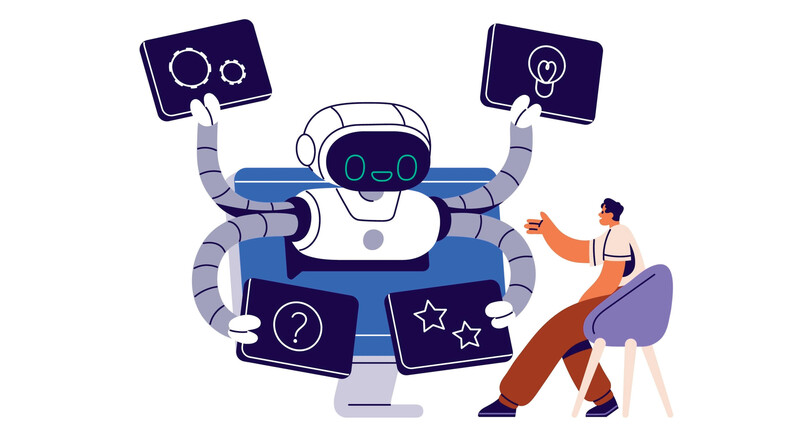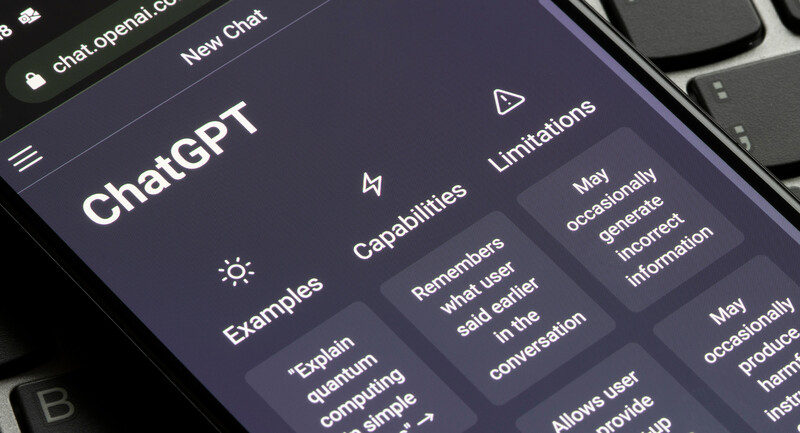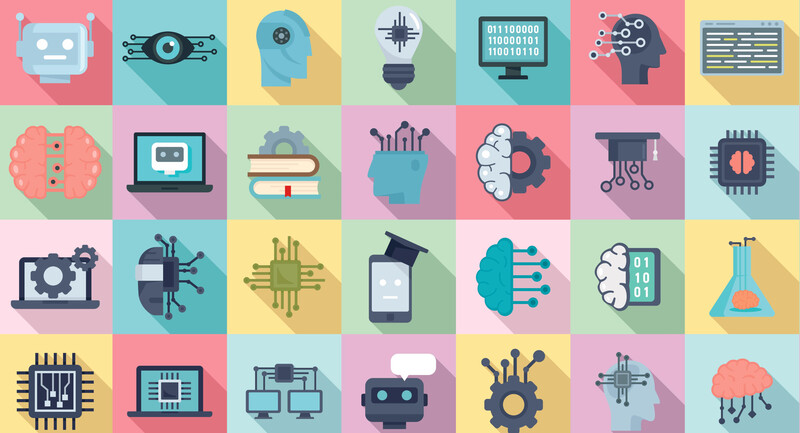Teaching artificial intelligence in education largely centers around making sure students and teachers know about AI—what it is, how it works, which tools to use, and how to fact-check responses. These AI-literacy skills are important, but if we only teach about AI we miss a critical opportunity to practice enhancing our human abilities with AI. In addition to just knowing about AI, students need to practice using AI to think deeper, create better, and solve problems more efficiently than they could on their own.
Profile of an AI Graduate
Many schools have created portraits of a graduate—frameworks that articulate the durable skills students should have by the time they graduate (beyond the subject-area knowledge about math, science, history, etc). Adopting that approach, I’ve created a "Profile of an AI-Ready Graduate,” which was shared at the recent ISTELive 25 + 2025 ASCD Annual conference. It identifies six core roles students should be comfortable taking on—with AI—to maximize their human potential.
Learner
Students know how to use AI to set learning goals, create plans for learning new skills, identify strategies to get unstuck, and seek targeted feedback to improve performance and understanding.
AI-ready graduates know how to use AI to help them identify skills needed to meet their future learning and career goals and plan pathways for learning those skills that match their unique needs and interests. This role also involves knowing how to use AI to get “unstuck” when learning a new skill becomes overwhelming or leads to a dead end. Perhaps most importantly, being a Learner involves knowing how to seek performance feedback from AI that is immediate, specific, and actionable (e.g. suggestions for improving writing, identifying weaknesses in reasoning, assessing artistic strengths, etc).
Researcher
Students know how to use AI to investigate and analyze topics, evaluate claims, and compare sources of information.
AI-ready graduates are adept at using AI as a research assistant that helps them think more comprehensively and critically about complex topics. This role moves beyond just searching for information to include investigating topics systematically, evaluating competing claims, and exploring and establishing diverse sources. Researchers understand how to use AI to identify both conflicting claims and areas of common agreement across multiple sources. They are skilled at directing AI to identify patterns within fields as well as across different fields to identify insights that are meaningful and valuable.
Synthesizer
Students know how to use AI to synthesize, remix, and refine information into formats and levels of complexity that best meet their unique needs and capabilities.
AI-ready graduates don’t just consume information: They know how to bring information together from various sources to increase understanding, illuminate connections, and generate new solutions. AI-ready graduates also know they don’t have to accept information that is above or below their level of understanding or not right for a given context, but instead use AI to adapt information to meet an appropriate learning level or audience needs or expectation. This includes changing media formats (audio to text, text to video, etc.) to get information in a format that is most appropriate for a given context.
Problem Solver
Students know how to use AI as a brainstorming partner to generate new ideas and explore a wide range of possibilities.
AI-ready graduates use artificial intelligence to spur their own thinking, break through creative blocks, explore alternative perspectives, and generate a range of ideas they may not have been able to consider on their own. They recognize the limitations of their own perspectives and benefit from generative conversations around ideas and possibilities. They know how to prompt AI to generate new options and out-of-the-box suggestions to broaden their thinking.
Connector
Students know how to use AI to increase human collaboration, including overcoming language barriers and finding common ground among divergent perspectives.
AI-ready graduates leverage artificial intelligence to facilitate deeper human connections and enhance the power of collaboration. This includes using real-time language translation to preserve cultural nuances and emotional tone, enabling people from different linguistic backgrounds to break down barriers to conversation. Connectors can use matchmaking algorithms to identify shared values and goals, making it easier to find mentors or build highly functioning teams. They also use AI to coordinate workflows, delegate tasks, and improve team member participation. Finally, they elicit diverse perspectives—including, for example, from historical figures or digital personas.
Storyteller
Students know how to use AI to present and communicate complex ideas through text, image, audio, video, and other media.
AI-ready graduates use artificial intelligence to enhance their ability to tell compelling stories and connect with others—sharpening their narratives, improving their presentations, and finding new ways to visualize complex concepts in formats beyond text. They might collaborate with AI to create visual metaphors for abstract ideas, or use AI to generate video to convey information in ways that resonate more powerfully with their intended audiences.
Preparing for an AI-Integrated Future
The Profile of an AI-Ready Graduate provides a roadmap for helping students learn to use AI to enhance and build on their uniquely human capabilities. By modeling and teaching the key roles students will be expected to take on, we can better prepare them for a world in which AI will be increasingly integrated into their lives. There is no question that students need to learn about AI. But to thrive (and survive) in an AI-powered world, they also need to know how to work with AI creatively, thoughtfully, and strategically. We must shift the conversation from one of basic theoretical understanding to one of in-depth practical and creative applicability. Anything less would be limiting their future success.
Interested in being part of this shift? Learn more about ISTE+ASCD’s pledge to prepare 200,000 teachers over the next two years to model AI life skills for students.
AI in Schools
This innovation-focused issue of EL magazine showcases examples of how schools and educators are using AI to enhance instruction and transform the nature of their work—and student learning—for the better.
